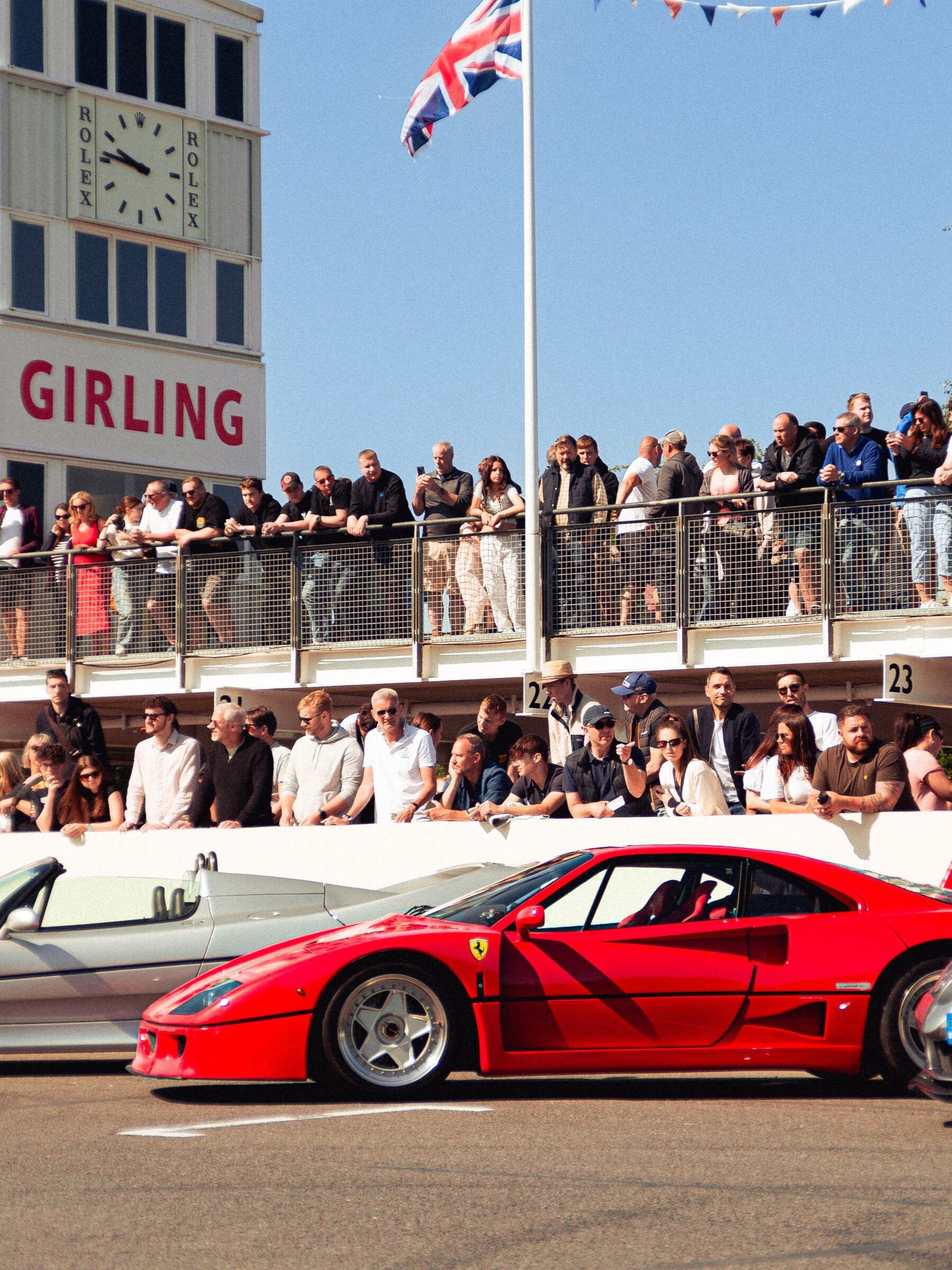The Cooper Car Company was greater than the sum of its parts
The latter indeed were sourced initially from a local scrap yard – albeit one brimming with high-grade military surplus – as well as from cannibalised Fiat Topolinos and Morrison air-raid shelters.

Founding father Charlie was pragmatic and parsimonious. Son John was more happy-go-lucky. Both were born engineers and resourceful: slices of wet-liners from marine diesels begat brake drums, etc. In this way they turned motorsport on its head – more by happy accident than calculated design – on both sides of Atlantic and Equator.
Having fashioned a crucial first rung in the late 1940s, Cooper was by the late 1950s atop the ladder. Despite its profound effect, however, it had yet to produce a truly great competition machine.
Reigning world champion Jack Brabham reckoned that his ‘Lowline’ contender of 1960 – which he bullied/secreted through against the company’s “How much?” conservatism – was Cooper’s first really good Formula 1 car.

Top, Jack Brabham driving a Cooper T53-Climax in Monaco, 1960. Above, Stirling Moss driving a Cooper-JAP MkIII at Zandvoort, 1949.
He guided it to five Grands Prix wins on the bounce to secure a second consecutive global title – but knew that the Lotus 18 was inherently quicker. If only the ‘Old Man’ would listen to him.
But Charlie shared only his initials and certain bullishness with cross-London rival Colin Chapman, whom he reckoned to be a right “Flash Harry”.
But when the latter finally got to grips with – and injected more science into – the driver-before-engine methodology, the chalk marks were on the floor for Cooper.
It had no answer to the bathtub-monocoque Lotus 25 of 1962; ditto, the chassis/engine package of the 49 of 1967; and was history by the time the hip-rad 72 wedge of 1970 had been sorted fully.

Jack Brabham driving a Cooper T53 Climax, Portugal, 1960.
But what a history. It was Cooper who had seen the potential of an everyman’s racing car in Austerity Britain, and who then created the market and flooded it. It didn’t build the best motorbike-engined single-seater – Kieft did – but its offerings were quick enough and built in batches, about one per week by 1951.
Its success was Britain’s success. The FIA codified 500cc Formula 3 in 1950. By which time teen sensations Stirling Moss and Peter Collins had cut their teeth and honed their skills, home and abroad, in these buzz bombs. (The former considered the category sufficiently beneficial to keep his hand in until 1954.)
Cooper’s central-seat ‘Bobtail’ sports-racer sprung from the next opportunity: the supply of a production competition engine – albeit one developed from a wartime fire pump – mated to an adapted Citroën Traction Avant gearbox. Cooper’s relationship with Coventry Climax – and Dunlop tyres – would take it to world glory.

Mike Hawthorn driving a Cooper T20 Bristol, Silverstone, 1952.
It was, however, a 2.0-litre BMW, cross-pushrod, straight-six, built under licence by Bristol, that got Cooper’s foot in the GP door, via Mike Hawthorn’s nitro-boosted version of 1952 – the car that made him a household name after a single day’s racing at Goodwood – and in Brabham’s lengthened Bobtail hybrid of 1955.
Had not the latter machine showed promise in a non-championship race at Snetterton – Jack dicing with Moss’s 2.5-litre Maserati 250F for third place – the ‘nut-brown Aussie’ might have gone home for good. Instead, he and engineering pen pal Ron Tauranac would remain fundamental to a motorsporting metamorphosis.
Formula 2 prolificacy became by increments – 1,960cc and 2,207cc – unexpected F1 success, via impertinent promise, when Moss eschewed inherent Cooper ‘chuck-ability’ to conserve down-to-the-canvas Continentals and so pinch the opening round of the 1958 world championship from under Ferrari’s nose.
The scent of red blood and the smell of success were in the air. GP distances had been slashed by a third and more economical Avgas mandated. Smaller cars – less to control and to force through the air – were the new ticket. And what seemed odd still to others came naturally to Cooper.

Bruce McLaren chasing Jack Brabham at Monza, 1959, both in Cooper T51 Climax.
With Climax’s torquey DOHC four-valve FPF ‘four’ now out to F1’s 2.5-litre maximum – with a little more to come for Indy – Brabham “pulled Ferrari’s trousers down” in 1959. And John Cooper did forward rolls in celebration.
With main chassis tubes now straight rather than oddly but purposely curved, and coil springs replacing single transverse leaf at the rear, Brabham repeated the trick in 1960, while fending off improved Lotus and BRM machinery.
The following season he foretold of the extinction event for Indy’s roadster ‘dinosaurs’ by finishing ninth in the 500. Had he pushed his too-soft Dunlops harder and three- instead of two-stopped – and had those stops been more slickly attended to – he might have finished sixth.
But then, confident he could do better, Brabham set up on his own from 1962. A path that was followed in 1965 by his impressive understudy; Bruce McLaren had felt he wasn’t being listened to either.

Jackie Stewart driving a Cooper F3 round Monaco in 1964.
Charlie had died (in 1964) while John was recovering from a bad car accident. It was getting easier. Moss revelled in the confidence that his big-banger ‘four’ Intercontinental/Tasman Cooper instilled during 1961-’62; he won the International Trophy by a lap. A slimly neat Formula 3 car provided a precocious Jackie Stewart with the first stage of his ‘rocket ship’ career in 1964. And the bulky Cooper-Maserati was, in John Surtees’ hands, briefly F1’s fastest in the latter stages of 1966. But the decline could not be halted.
Cooper’s final GP win was secured in the opening round of 1967. That it came as a nice surprise was not a good thing on this occasion.
Pioneering spirit takes you only so far and Cooper’s was guttering due to a lack commercial oxygen. Its best deal – a £2 royalty per car – could not save it in F1, but immortalised it on road, stage – from the Monte Carlo Rally to TV’s Sunday Night at the London Palladium – and screen.
The Mini-Cooper and its ‘S’ derivative were cheeky and nippy, revelatory and revolutionary in an engaging everyman way: a mobile metaphor for its creator.
Cooper had blown the bloody doors off. Then teetered on a cliff’s edge. Before an unexpected plot twist a few months before the 1969 release of the Italian Job: the renting of its curve-fronted Surbiton HQ to traffic plod.
“Who do you think you are, Stirling Moss?”
Photography courtesy of Motorsport Images.
Formula 1
F3
Motorsport
Cooper
Stirling Moss
Jack brabham
Bruce McLaren
Mike Hawthorn
Jackie Stewart





































































